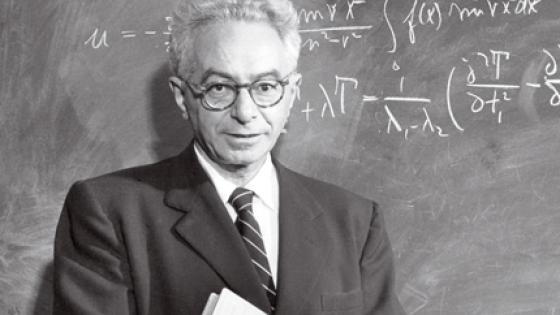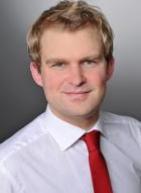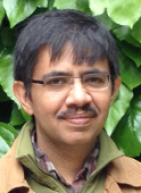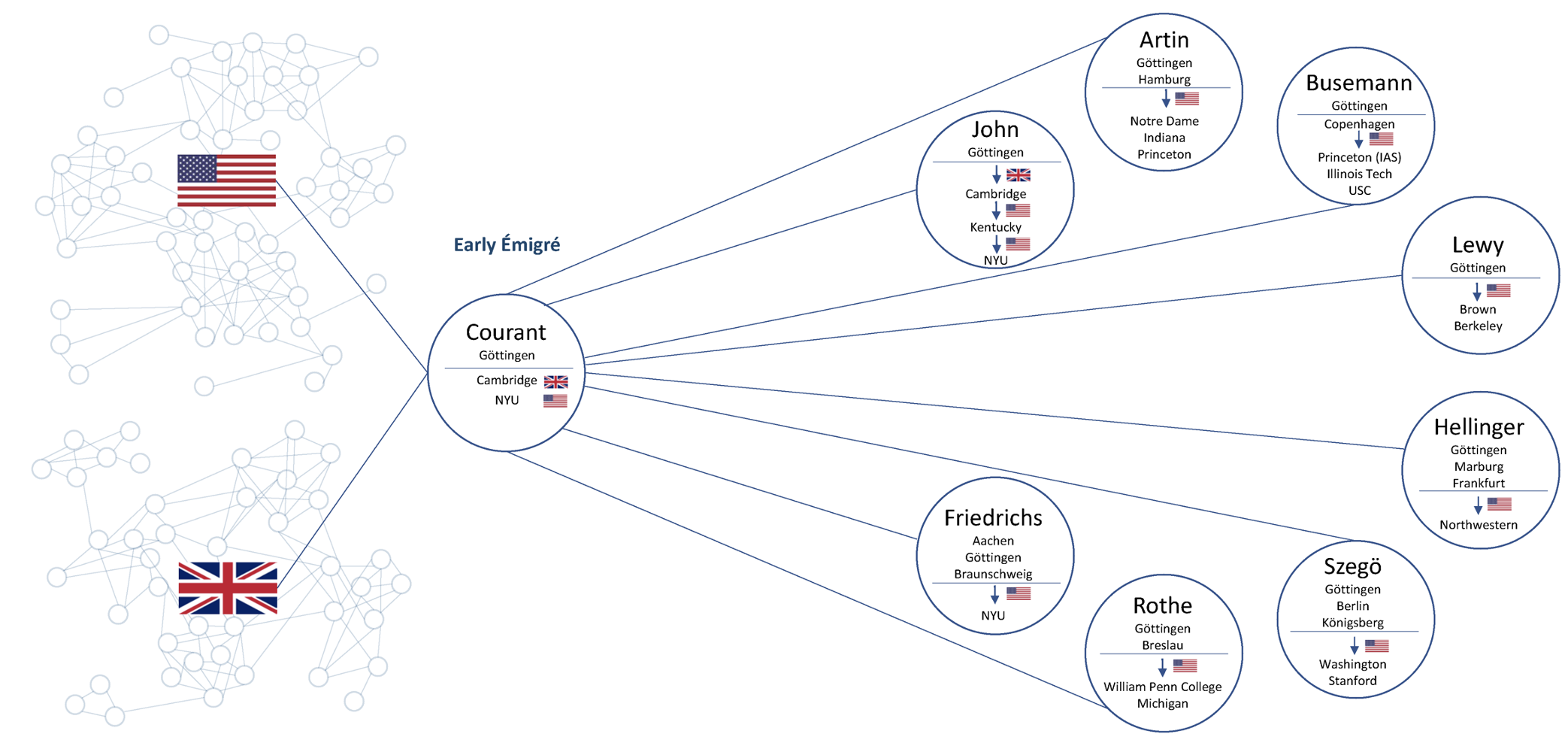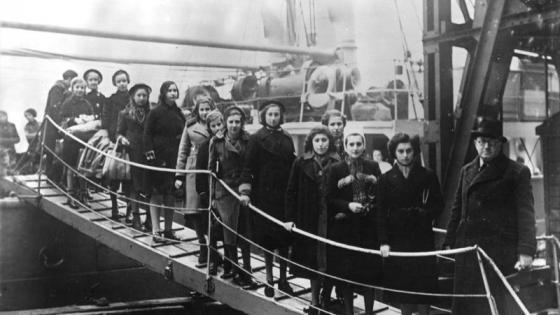Scholars around the world are increasingly at risk. From September 2019 to August 2020, there were 341 attacks on universities in 58 countries (Scholars at Risk 2020). In recent years, academics have faced persecution in many countries, including Hong Kong (Normile 2020), Hungary (Enyedi 2018), and Turkey (Bohannon 2016). Throughout history, academics have been persecuted because of their ethnicity, political views, beliefs, or religion. A prominent example is the persecution of Jewish academics in Nazi Germany, raising questions about who managed to escape the Nazi regime and what role their professional networks played.
Persecution and forced displacement have been salient issues for centuries (see Becker and Ferrara 2019, Becker 2022, and Becker et al. 2022 for surveys). The only way to ensure survival is often through migration to safer parts of the same country (e.g. Sarvimäki et al. 2022), or across international borders (see Buggle et al 2023a, summarised in Buggle et al 2023b).
While forced migration of a general population has been studied in many contexts, the ability to emigrate may differ for highly skilled individuals. Though the literature has suggested how the dismissal of Jewish scientists affected German universities (e.g. Waldinger 2010, 2012, 2016) and innovation in destination countries (e.g. Moser et al. 2014), much less is known about the fate of the Jewish academics themselves, and about the mechanism underlying the emigration of highly skilled populations in the face of persecution.
In a recent paper (Becker et al. 2023), we study the emigration of academics of Jewish origin from Weimar Germany. They include some of the greatest scientific luminaries of the 20th century – Nobel laureates Albert Einstein, Max Born, and Fritz Haber – as well as social scientists and philosophers such as Hannah Arendt and Theodor Adorno. German universities were among the world’s best in many disciplines, but the academic culture that flourished in Germany came to a sudden halt when the Nazi party gained power in 1933. After only a few months in power, the new regime started dismissing academics of Jewish origin. By 1939, virtually all Jewish academics had lost their jobs. In Becker et al. (2023), we examine whether and how professional academic networks and social capital helped German Jewish academics escape through emigration.
The case of Richard Courant gives some insight into the role of professional networks in emigration decisions. Courant was a world-leading mathematician at the University of Göttingen who emigrated to Cambridge in 1933 and to New York University the year after. Courant received letters ‘by the dozens’ asking for help from mathematicians seeking to flee Germany. Figure 1 shows how he supported some of his former colleagues in finding work in the US and the UK.
Figure 1 Courant’s involvement securing faculty positions for his professional network
Notes: the mathematicians listed here depict professional ties for which we found explicit documentary proof of Courant’s role in facilitating their emigration. Courant’s involvement is represented by the small blue arrows. (Friedrichs and Artin were not of Jewish origin but were persecuted because they had Jewish wives.)
This example suggests that professional networks could be highly valuable in enabling academics to find work outside Germany.
To understand how networks enabled escape, we compiled a complete census of all 1,370 Jewish academics who faced persecution from Nazi Germany. We draw on various archival records alongside university-specific data and subject-specific studies to compile the first full census of all Jewish academics employed at German universities before the Nazis gained power. This allows us to observe their professional networks in the pre-1933 period as well as detailed information on their fate after 1933. Our paper thus provides the first comprehensive documentation of the fate of academics of Jewish origin during the Nazi period.
By 1945, around 80% of Jewish academics had managed to emigrate (Figure 2). Around 14% remained in Germany, and 6% were murdered in the Holocaust. These findings are a striking contrast to the fate of the general German Jewish population, of whom only about half managed to emigrate. It is important to highlight that even for the 94% who escaped the Holocaust, the Nazi period was a terrible experience. Their personal lives were shattered, their careers forcefully upended, and many lost relatives and friends in the Holocaust.
Émigrés scattered across globe, their main destinations the US and the UK (Figure 3).
Figure 2 The fate of persecuted academics in 1945
Notes: Figure reports the fate of persecuted Jewish academics for 1 January 1945. The category ‘Dead (Murdered)’ contains academics killed by the Nazis, suicides of academics and those whose death was most likely caused by Nazi persecution, and academics who were deported to camps but were still alive by 1 January 1945. The category “Dead (Other)” contains academics who were dead by 1 January 1945 and whose death was most likely not caused directly by the Nazis. It is important to note that even such deaths from other causes may have been a result of Nazi persecution.
Figure 3 Movements of German Jewish academics between 1933 and 1945
Notes: Figure shows the location of Jewish academics on 1 January 1933 (blue dots, all in Germany) and 1 January 1945 (red dots or black dots). The size of the dots reflects the number of academics in each location. The white lines connect the locations on 1 January 1933 and 1 January 1945. The width of the lines reflects the number of academics moving between the two locations. Many academics moved to the 1945 destination via intermediate destinations not shown in the Figure.
Estimating the effect of professional networks on the probability of emigration faces two challenges. First is the measurement of academic networks. Second, networks may be endogenous for two reasons: academics may form ties to facilitate emigration, and network measures may be correlated with omitted variables that enable emigration.
We tackle these challenges by using our rich biographical data, which allow us to reconstruct the pre-dismissal professional network for all Jewish academics. We define the professional network as all Jewish academics who worked in the same subject and city between 1 January 1929 and 1 January 1933. The data are unique for studying the role of networks in migration decisions because they allow us to measure yearly snapshots of the pre-emigration professional network. This enables us to exploit variation in the number of ties that come from pre-dismissal academic turnover. For example, we exploit the fact that physicists may have joined or left the University of Göttingen at different points between 1929 and 1933. Hence, they may have overlapped with slightly different sets of colleagues. This allows us to carefully control for other factors that may affect migration decisions.
As highlighted by Richard Courant’s example, émigrés who left Germany very soon after the Nazis gained power may have been a key factor in emigration decisions, because they could facilitate information flows between the pre-emigration network of Jewish academics and foreign networks. Accordingly, we focus on ties to early émigrés from an academic’s pre-dismissal professional network, where early émigrés are defined as academics who had emigrated by 1 January 1935. To address selection into early emigration, we exploit individual-level exogenous variation in the timing of dismissals, created by the Law for the Restoration of the Professional Civil Service, which was passed on 7 April 1933. Crucially for our identification strategy, the law made important exemptions, which initially allowed some Jewish academics to remain in their positions while other were immediately dismissed.
Our first set of results shows that ties to early émigrés facilitated emigration. Academics with ten additional ties to early émigrés had a five percentage point higher probability of emigrating by 1939, an effect that persisted until 1945.
Our second set of results shows that the effect of the professional network was directional. Early émigrés to the US or the UK increased the probability of emigrating to these countries while decreasing emigration to other countries. Similarly, early émigrés to other countries increased emigration to other countries but decreased the probability of emigrating to the US or the UK. These results underscore the notion that early émigrés functioned as a bridge, helping other academics cross over in the same destination.
In our third set of results, we analyse characteristics of social ties that make them more or less effective in facilitating emigration. We provide some of the first systematic evidence that the strength of social ties ‘decays’ over time, finding that ties to more recent colleagues were twice as important as ties to less recent colleagues. Furthermore, we find suggestive evidence that social ties decay with geographical distance, even within cities.
Theory would suggest that networks are more important when market participants have private information, and that credible signalling through publicly observable channels is difficult. We thus investigate the strength of social ties between broadly scientific areas that differ in how easily outsiders can assess the quality of research, and show that ties to early émigrés were more important in humanities and social sciences than in natural sciences and medicine. This is consistent with the observation that research quality in the hard sciences can be assessed more objectively. We also find evidence that the effect of professional networks is larger in fields where academics publish longer but fewer works. In these fields, early émigrés may provide valuable information about the expected future research productivity of their former colleagues. Finally, we show that professional networks may be useful at relaying information about ‘surprise’ changes in productivity – information about academics becoming significantly more (or less) productive compared to their pre-1933 reputation. These results indicate that professional networks are more important in situations where they provide private information about the quality of candidates that is difficult to observe from a distance.
Our fourth set of results compares the effect of professional networks to the effects of family or (non-family) community networks. We find that early émigrés from the family network also affected emigration but with a somewhat smaller magnitude than the professional networks. By contrast, non-family community networks had no effect on the emigration decisions of academics. This is striking because Buggle et al. (2023) use the same data source to measure community networks and find sizeable effects for emigration from Nazi Germany of the general Jewish population. Our results suggest that different types of networks matter for the emigration decisions of highly skilled migrants than for migrants overall. Hence, analyses of the role of networks in the migration decisions of highly skilled individuals would be incomplete if they ignored professional networks.
The role of professional networks in providing migration opportunities for highly skilled workers has implications for current policy. Our results suggest that even short-term interruptions or surges in high-skilled migration can have long-term implications for the flow of high-skilled workers to a country. Richard Courant is a case in point. Had he stayed at Cambridge, he would have supported his colleagues moving into appointments in the UK. As it was, he moved to the US in 1934, and eight of his former colleagues from Germany joined him there. Changes in visa policies and other programmes restricting or encouraging high-skilled migration could have long-term effects on the allocation of talent.
References
Becker, S O (2022), “Forced displacement in history: Some recent research”, Australian Economic History Review 62(1): 2-25.
Becker, S O and A Ferrara (2019), “Consequences of forced migration: A survey of recent findings”, Labour Economics 59: 1–16.
Becker, S O, S Mukand, V Lindenthal and F Waldinger (2023), “Persecution and Escape: Professional Networks and High- Skilled Emigration from Nazi Germany”, American Economic Journal: Applied Economics, forthcoming.
Becker, S O, S Mukand and I Yotzov (2022), “Persecution, Pogroms and Genocide: A Conceptual Framework and New Evidence”, Explorations in Economic History 86, 101471.
Bohannon, J (2016), “Turkish academics targeted as government reacts to failed coup”, Science Insider, July.
Buggle, J, T Mayer, S O Sakalli and M Thoenig (2023a), “The refugee’s dilemma: Evidence from Jewish migration out of Nazi Germany”, The Quarterly Journal of Economics 138(2): 1273–1345.
Buggle, J, T Mayer, S O Sakalli and M Thoenig (2023b), “How asylum policies deterred Jewish migration out of Nazi Germany: A quantitative assessment”, VoxEU.org, 25 January.
Enyedi, Z (2018), “Democratic backsliding and academic freedom in Hungary”, Perspectives on Politics 16(4): 1067–1074.
Moser, P, A Voena and F Waldinger (2014), “German Jewish émigrés and US invention”, American Economic Review 104(10): 3222–3255.
Normile, D (2020), “New security law rattles Hong Kong universities”, Science 369(6500): 129–129.
Sarvimäki, M, R Uusitalo and M Jäntti (2022), “Habit Formation and the Misallocation of Labor: Evidence from Forced Migrations”, Journal of the European Economic Association 20(6): 2497–2539.
Scholars at Risk (2020), Free to Think 2020: Report of the Scholars at Risk - Academic Freedom Monitoring Project.
Waldinger, F (2010), “Quality Matters: The Expulsion of Professors and the Consequences for PhD Student Outcomes in Nazi Germany”, Journal of Political Economy 118(4): 787–831.
Waldinger, F (2012), “Peer effects in science: Evidence from the dismissal of scientists in Nazi Germany”, The Review of Economic Studies 79(2): 838–861.
Waldinger, F (2016), “Bombs, Brains, and Science: The Role of Human and Physical Capital for the Production of Scientific Knowledge”, The Review of Economics and Statistics 98(5): 811–831.
